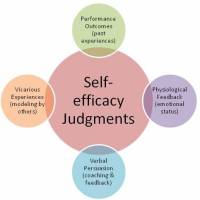I often tell our staff at Durrington: “homework isn’t going anywhere.”
I’m starting to realise this phrase is open to misinterpretation.
What I mean is: homework is important at secondary school (according to research evidence) so get used to it, because it will remain a priority until that changes. However, upon reflection it may sound like I’m bemoaning the fact it isn’t moving forward. Which is not what I mean at all. Perhaps I need to work on my whole-staff communication.
This year has been a year of evolution for homework at Durrington. I explained the changes we were making in a blog I wrote back in October that you can read here. It wasn’t so much that homework was bad, it was more that some systems needed tightening and we needed to add some extra layers of detail to what we felt constituted effective homework. As Dylan Wiliam so eloquently put it at a ResearchEd in 2014: “Most homework that teachers set is crap.” And if the homework isn’t any good then all the positive effects the research-evidence points to will be lost.
We have kept with the four Durrington principles that all homework must either embed, improve, extend or apply learning, and together with some additions from the world of educational research, have created the following active ingredients for our homework:

What we haven’t said to staff is that all homework must involve every single one of these elements as this would create confusion and a tick box approach. What we have said, however, is that a homework that doesn’t take account of these principles must not be set.
What this is leading to is more homework that is deeply integrated into the curriculum, teaching and assessment. It is feeling less like a bolt-on and more an extension of what happens in the classroom.
An example is this history homework:

Here’s how this homework would connect to our active ingredients:
- It embeds knowledge on the early Cold War.
- It applies this knowledge through a practice question.
- It involves retrieval practice as the quiz questions are answered from memory.
- It exploits the benefits of spaced practice as this homework was set while students were learning about crime and punishment in lessons.
- Feedback for the quiz questions is through teachers revealing the answers at the start of the lesson and students marking their own. The exam answers are marked summatively with formative feedback provided through whole-class feedback on common misconceptions.
- The quiz questions involve tier 3 vocab.
Not all homeworks need a list this long, but they must demonstrate clear connections to our active ingredients. How this looks has been left to subject areas, with our refurbished homework policy documents created with active ingredient tick lists to ensure this has been considered for all homework we plan to set. It is then up to curriculum leaders to monitor in the first instance with line managers and myself providing the overview.
As always, the evolution continues, but, just to be clear, homework isn’t going anywhere.
Posted by Chris Runeckles










